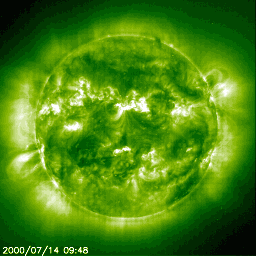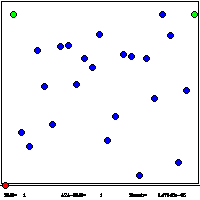Research on Self-Organized Criticality:
|
It has been observed that self-similar (``critical'') structures are quite ubiquitous in nature, and the question as to the dynamical origin of those structures arises. Some years ago, Self-Organized Criticality (SOC) was proposed as one mechanism to describe the basic mechanism that creates generic scale-free behavior. According to SOC, such behavior emerges when an externally driven, dissipative system organizes itself into a state in which all spatial and temporal events are correlated over many orders of magnitude. For example, when two tectonic plates slowly collide the resulting stress is released along a (fractal) system of fault lines through highly correlated earthquake events of all sizes (Gutenberg-Richter law). Similar phenomena have been observed for many systems which are kept far from equilibrium in a maze of meta-stable states through the inflow of energy. These systems traverse ``rugged landscapes'' in phase space in search of their ground state, much like vibrated sand, folding polymers or spin glasses, with extremely slow relaxation dynamics. Even the intermittency of solar flares can be described as SOC avalanches. |
 |
Bak-Sneppen updates. (Here is a longer animation.) |
In collaboration with Maya Paczuski, I have developed a solvable model of SOC that provides a unique, first-principles insight into far-from-equilibrium dynamics. Our "Multi-Trait Model" is a generalization of the Bak-Sneppen model (see DEMO here) that describes biological evolution at long time scales. The equation of motion we derived contains hallmarks of complex behavior such as a nonlinearity and history dependence, but remains analytically tractable. Emergent properties of the model are the power laws that signal SOC. Various other phenomena such as punctuated equilibrium, slow relaxation, and glassy behavior are dynamically generated. Aging in SOC appears to be quite common, signaling the importance of long-range memory. We have further demonstrated the universality of SOC in describing phenomena ranging from experiments in granular materials to interface depinning and earthquake models. Lately, Allon Percus and I have explored the use of emergent dynamics as a basis for combinatorial optimization heuristics, such as Extremal Optimization (EO). |
|
©1996-2002 Physics Department, Emory University. These pages may be freely distributed if unmodified. Last Update: 9/26/02; 2:55:53 PM For more information, contact: webmaster@physics.emory.edu |
